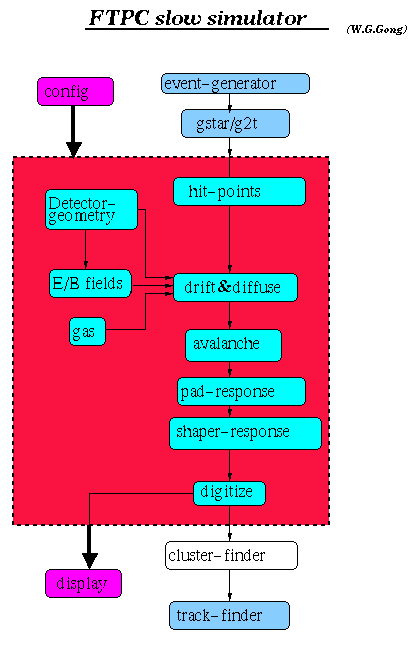
An Overview
The FTPC slow simulator is implemented as a stand-alone program (called ftpcsim) at the moment. Its conversion into a STAF-PAM (named FSS) was delayed due to WGG's departure, but it should be a straight-forward task. This page hopes to introduce the FSS functionality to anyone who is interested in using and/or further-developing this program for the FTPC detector.
The main purposes of the ftpcsim or FSS is to
- evaluate the two-track resolutions
- evaluate the track-density and pixel occupancy
- provide simulated data for tuning a track-finder
- provide simulated data for optimizing the DAQ design
Note: the left diagram is an imagemap, just click on the blocks to get familiar with the program.